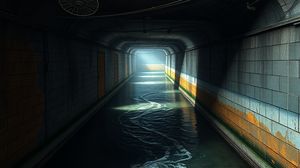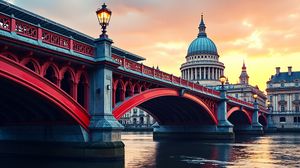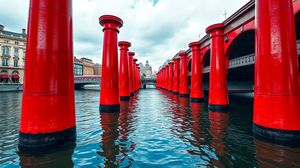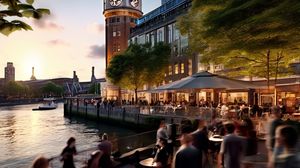
The River Fleet is one of London's most famous hidden rivers, running through the heart of the city. Once a bubbling river meandering through lush countryside, it is now largely subterranean, confined to underground tunnels. Its fascinating history spans from Roman times to the present day, reflecting the evolving landscape of the capital.
Originally, the River Fleet was a significant feature of London, flowing openly and providing water for various mills. Over the centuries, urban development led to the river being gradually hidden beneath the city streets. By the late 19th century, it had been fully covered, becoming an underground secret for most Londoners.
Despite being hidden from view, the River Fleet continues to capture the imagination of historians and urban explorers. Some sections can still be accessed through special tours, offering a glimpse into the forgotten infrastructure of the city's past. The tunnels echo with the history of London, providing a unique way to journey through time.
Intriguingly, the river has had an impact on local culture as well. Its name is embedded in the city's geography, with Fleet Street being one of the most famous thoroughfares, historically home to Britain's journalism and newspaper industry. Thus, the river's legacy continues even above ground.
There are tales from history suggesting the river was once notorious for its pungent smell and pollution, particularly during periods of London's rapid industrialization. It became notorious for flooding in the city's early days, a hazard that often impacted those living nearby.
In recent years, there has been talk and curiosity about whether parts of the River Fleet could be uncovered or restored to their former glory. This idea resonates with those interested in urban renewal and the rewilding of urban spaces, offering an imaginative leap for revitalizing London's landscape.

Making the Most of Your Visit:
When you're exploring the history of the River Fleet, make sure to take a walk along Fleet Street and Ludgate Hill. These areas are steeped in history and give you a sense of where the river used to flow above ground. You can almost imagine the river coursing beneath your feet, especially knowing it used to border this famous street.
If you're interested in seeing part of the River Fleet, look out for special walking tours that delve into London's subterranean history. These tours tend to be seasonal due to access and require advanced booking, as spots fill up quickly. It's a rare opportunity to see the hidden world beneath London.
A quirky spot to mark on your map is the junction of Hampstead Road and King's Cross Road where you'll find a small, discreet plaque noting the river's course. It's a little-known marker that pays homage to the winding path the Fleet once took and is a nice starting or ending point for your exploration.
Visit St. Pancras Old Church, one of the oldest sites in London, located near one of the river's sources. The churchyard, supposedly on the banks of the Fleet in ancient times, is an atmospheric location to ponder how the landscape has changed over the centuries.
An interesting nugget to remember as you explore is that some legends suggest the river can still be heard gurgling below certain manholes along its course after heavy rain. It's a fun tidbit to think about while tracing its route!

Visiting Times & Costs:
The River Fleet is not directly open to the public in the traditional sense as it is largely subterranean, flowing under the streets of London. However, there are specific tours that offer access to parts of the underground tunnels.
Availability: Tours to explore the River Fleet are typically seasonal, often planned during certain months when conditions allow safe access. They usually require booking in advance due to limited spots.
Cost: These tours are typically not free and vary in price depending on the provider. Be sure to check with tour operators for specific pricing information.
Accessibility: Due to the nature of the underground environment, access may be restricted for those with mobility issues. These tours often involve walking in sometimes cramped and potentially uneven conditions. Participants should check with the tour provider regarding accessibility options and requirements.

Address & Map:

Nearby:























